
Rauma is a town in Finland, on the western coast of the country. Rauma is in the Satakunta region, by the Gulf of Bothnia. The population of Rauma is approximately 39,000, while the sub-region has a population of approximately 65,000. It is the 29th most populous municipality in Finland.
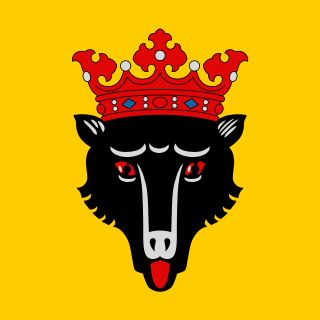
Pori is a city in Finland and the regional capital of Satakunta. It is located on the west coast of the country, on the Gulf of Bothnia. The population of Pori is approximately 83,000, while the sub-region has a population of approximately 128,000. It is the 10th most populous municipality in Finland, and the eighth most populous urban area in the country.

Pirkkala is a municipality in Finland, located in the Pirkanmaa region. It lies to the southwest of the regional capital, Tampere. The population of Pirkkala is approximately 21,000, while the metropolitan area has a population of approximately 423,000. It is the 48th most populous municipality in Finland.

Satakunta is a region of Finland, part of the former Western Finland Province. It borders the regions of Southwest Finland, Pirkanmaa, South Ostrobothnia and Ostrobothnia. The capital city of the region is Pori. The name of the region literally means hundred. The historical province of the same name was a larger area within Finland, covering modern Satakunta as well as much of Pirkanmaa.

Huittinen is a town and municipality in Finland. It is located in the Satakunta region, 63 kilometres (39 mi) southeast of Pori and 75 kilometres (47 mi) southwest of Tampere. The town has a population of 9,553 and covers an area of 539.59 square kilometres (208.34 sq mi) of which 6.97 km2 (2.69 sq mi) is water. The population density is 17.93 inhabitants per square kilometre (46.4/sq mi).
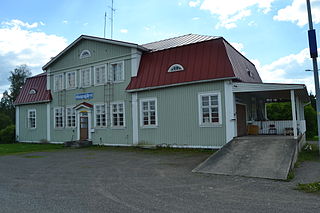
Haapajärvi is a town and municipality of Finland.
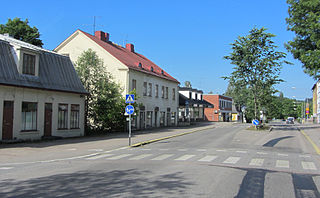
Karkkila is a town and a municipality of Finland.

Kokemäki is a town and municipality in the Satakunta Region of Finland. The town has a population of 6,672 and covers an area of 531.27 square kilometres (205.12 sq mi) of which 50.04 km2 (19.32 sq mi) is water. The population density is 13.89 inhabitants per square kilometre (36.0/sq mi).
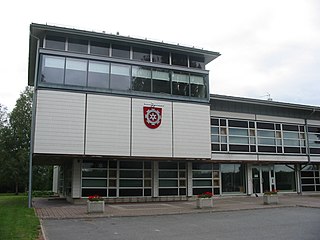
Koski Tl is a municipality of Finland.

Loppi is a municipality in Finland. It is located in the province of Southern Finland and is part of the Kanta-Häme region, located about 50 kilometers south of the city of Hämeenlinna. Loppi was founded in 1632. The municipality has a population of 7,658 and covers an area of 655.97 square kilometres (253.27 sq mi) of which 58.36 km2 (22.53 sq mi) is water. The population density is 12.81 inhabitants per square kilometre (33.2/sq mi). The municipality is unilingually Finnish.
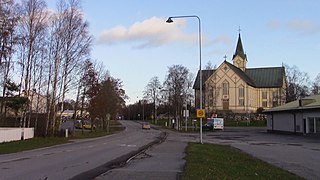
Merikarvia is a municipality in Finland. It is located in the Satakunta region. The neighboring municipalities are Isojoki, Kristinestad, Pomarkku, Pori and Siikainen.

Mouhijärvi is a former municipality of Finland, located in the southwestern part of the country. It was an agricultural village since the 18th century.

Nakkila is a municipality of Finland. It is located in the province of Western Finland and is part of the Satakunta region, 19 kilometres (12 mi) southeast of Pori. The Kokemäki River flows along the center of Nakkila. The municipality has a population of 4,936 and covers an area of 184.88 square kilometres (71.38 sq mi) of which 1.97 km2 (0.76 sq mi) is water. The population density is 26.98 inhabitants per square kilometre (69.9/sq mi). The municipality is unilingually Finnish. The name Nackeby was earlier used in Swedish.
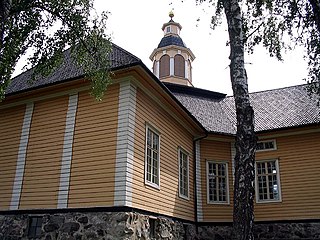
Nastola is a former municipality of Finland. It was merged with the city of Lahti on 1 January 2016.

Somero is a town and municipality of Finland. It is part of the Southwest Finland region in the province of Western Finland, located 36 kilometres (22 mi) northeast of Salo, 86 kilometres (53 mi) east of Turku and 105 kilometres (65 mi) northwest of Helsinki. The municipality has a population of 8,430 and covers an area of 697.67 square kilometres (269.37 sq mi) of which 29.9 km2 (11.5 sq mi) is water. The population density is 12.62 inhabitants per square kilometre (32.7/sq mi). Somero is unilingually Finnish.

Säkylä is a municipality of Finland. It is located in the Satakunta region, 65 kilometres (40 mi) southeast of the city of Pori. The municipality has a population of 6,266 and the municipality covers an area of 527.71 square kilometres (203.75 sq mi) of which 107.89 square kilometres (41.66 sq mi) is inland water (2018-01-01). The population density is 15 inhabitants per square kilometre (39/sq mi). The municipality is unilingually Finnish.

Ulvila is a town and municipality of Finland. It is one of the six medieval cities of Finland, as well as the third oldest city in the country. Ulvila was granted charter as a town by King Albert of Sweden on 7 February 1365. However, its town privileges were taken over by Pori in 1558. After 442 years, Ulvila regained town privileges in 2000.
Boliden AB is a Swedish multinational metals, mining, and smelting company headquartered in Stockholm. The company produces zinc, copper, lead, nickel, silver, and gold, with operations in Sweden, Finland, Norway, and Ireland.
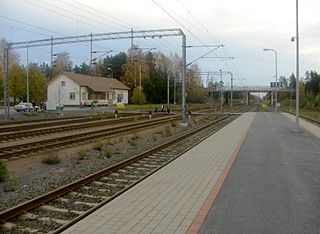
The Tampere–Pori railway is a railway running between the cities of Tampere and Pori in Finland. The line carries passenger traffic from Tampere to Pori via five railway stations and continues as a freight line to the Port of Pori. Tampere–Pori railway was opened in 1895 and the line follows the river Kokemäenjoki.

Vanhakylä or Vanha-Ulvila is a district of Ulvila in the Pori sub-region of Satakunta in southwestern Finland. The Kokemäenjoki divides the town centre of Ulvila into two parts – Vanhakylä constitutes the eastern half, on the northern bank of the Kokemäenjoki, and the western half is the district of Friitala, on the river's southern bank.






















